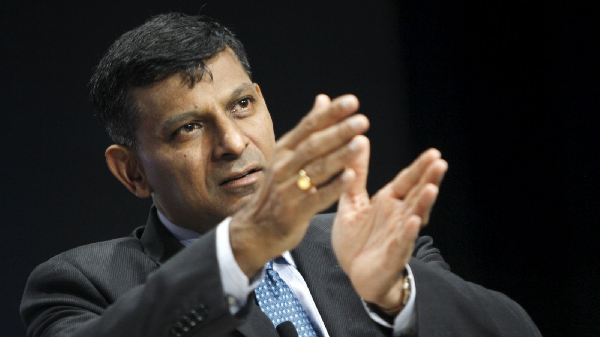
by admin | May 25, 2021 | Economy, News, Politics

Raghuram Rajan
New Delhi : Populist nationalism is potentially quite damaging to economic growth, and which is often articulated as the majority community’s feelings of aggravation at being discriminated against, former RBI Governor Raghuram Rajan said on Sunday.
In a conversation, the recording of which was shown at the Times Litfest event here, he said that populist nationalism is ascedent all over the world and India is not immune to it.
“Populist nationalism is damaging to economic growth… it has to set back the economy because it is divisive. It feeds off the sensation of the majority community feeling it is being discriminated against,” Rajan, who is not known to speak often on politics, said in response to a query on the issue.
“It exists all over the world and also in India, while people exploit this sense of grievance,” he said, noting that the issue of reservations in the country is an instance of the phenomenon.
“It is important to tackle the underlying economic problem (jobs). One cannot overstate the grievance of the majority community because minorities have also faced discrimination historically,” Rajan said.
He described populist nationalism as “inward looking”, while policies it advocates “often come in the way of growth.”
“Nationalism is not patriotic because it is divisive and can even be quite dangerous. However, it is wrong to dismiss people who are voicing these things..dismissing them as rustic.
“These protests have a sense of identity that is being eroded…that cry also has to be heard,” he added.
The ex-governor of the central bank said in the ultimate analysis, democracy is India’s strength.
“There may by push and pulls in the working of democracy, but in the long-term it is beneficial. It is egalitarian, takes people along together, a superior mechanism to identify the flaws in the market system and for the system to react,” he said.
About “illiberal democracy”, Rajan, who is currently professor in the University of Chicago, said that it was “a function of the system, which kowtows to the strong leader.”
“Business leaders, apart from some exceptions, tend to bow to the political leader. Iliberal democracy is crony capitalism also because the interests of business and political leaders coincide,” he said.
“Limited access societies have captured the pathways to wealth,” he said while describing “crony capitalism.”
There exists a “cosy relationship” between the corporate and the political leadership in which the mass media, mostly owned by corporates, is implicated, Rajan added.
—IANS
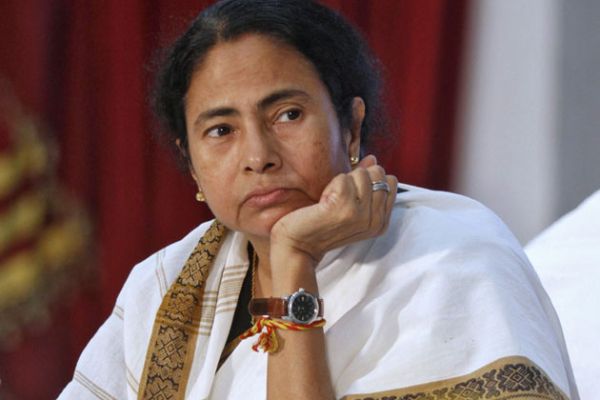
by admin | May 25, 2021 | Business, Economy, Large Enterprise, News, Politics

Mamata Banerjee
Kolkata : West Bengal Chief Minister Mamata Banerjee on Monday said the state, which has been facing legacy issues in terms of ease of doing business, has fulfilled 336 parametres out of the 372.
The remaining 36 parametres would be met in the next few months, she said addressing the Horasis Asia Meeting.
The state currently is in the top 10 in the ease of doing business ranking and she assured that it would emerge as the number one in the ranking soon.
She also said: “It takes time (to improve the ranking) and we are facing some legacy issues.”
—IANS
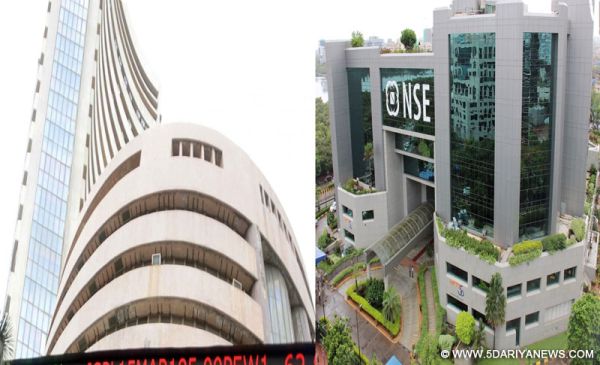
by admin | May 25, 2021 | Economy, Markets, News
 By Porisma P. Gogoi,
By Porisma P. Gogoi,
Mumbai : GDP data for the second quarter of the 2017-18 fiscal, along with expiry of derivatives and the movement of foreign funds, are expected to be the main indicators to give direction to the key Indian equity indices in the upcoming week.
Apart from global cues, over the coming weeks, markets will seek direction from future events like the Reserve Bank of India policy meet during the first week of December and the Gujarat elections the following week.
“Focus in the coming week will be on the GDP numbers for the September quarter due to be released on November 30. Consumption growth is likely to be impacted by GST implementation during Q2FY18 and private sector capex continued to remain weak,” Teena Virmani, Vice President – PCG Research at Kotak Securities, told IANS.
“RBI policy in the first week of December and Gujarat elections in the second week are also being eyed closely. The rise in crude prices has left very little scope for RBI to cut rates in the upcoming meeting,” said Virmani.
Virmani pointed out that at the global level, the movement of oil prices will be closely watched as geo-political tensions in the Middle East are likely to remain supportive of oil prices in the run-up to the November OPEC (Organisation of the Petroleum Exporting Countries) meeting.
Other analysts have noted the November derivatives’ expiry and the direction of the flow of funds as the major triggers for the week starting November 27.
D.K. Aggarwal, Chairman and Managing Director of SMC Investments and Advisors, said: “The Indian markets may remain volatile as investors churn portfolios ahead of the monthly derivatives contract expiry on Thursday.”
“Also, the flow movement of foreign funds and domestic funds will play a critical role in giving direction to the market,” Aggarwal told IANS.
Provisional figures from the stock exchanges showed that domestic institutional investors (DIIs) bought scrips worth Rs 2,925.56 crore during last week. However, foreign institutional investors (FIIs) continued to remain net sellers, shedding stocks worth Rs 1,870.27 crore.
Figures from the National Securities Depository Ltd. (NSDL) revealed that foreign portfolio investors (FPIs) invested in equities worth Rs 2,106.45 crore, or $325.16 million, during November 20-24.
“Technically, with the Nifty rallying after two weeks of losses and also breaking out of the recent narrow trading range, the bulls seem to be in control. Further upsides are likely once the immediate resistance of 10462 is taken out,” Deepak Jasani, Head of Retail Research for HDFC Securities, told IANS.
Last week, the equity indices rode the bulls pursuing the optimism on a sovereign ratings upgrade of the Indian government’s bonds by US credit rating agency Moody’s a week before, supported by a further thrust given by continued buying by DIIs.
On a weekly basis, the barometer 30-scrip Sensitive Index (Sensex) of the Bombay Stock Exchange (BSE) closed higher from its previous week’s close by 336.44 points, or one per cent, at 33,679.24 points.
The broader Nifty50 of the National Stock Exchange (NSE) edged higher by 106.1 points, or 1.03 per cent, to close the week’s trade at 10,389.70 points.
(Porisma P. Gogoi can be contacted at porisma.g@ians.in)
—IANS
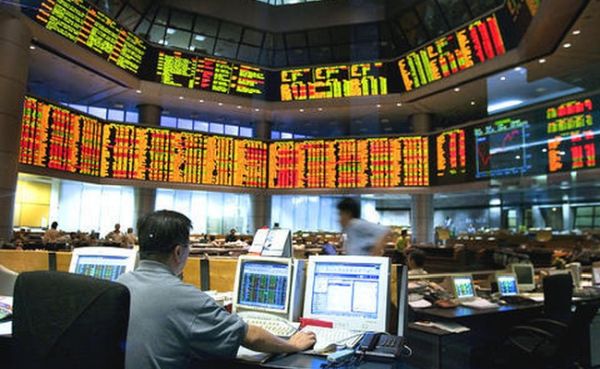
by admin | May 25, 2021 | Economy, Markets, News
 By Porisma P. Gogoi,
By Porisma P. Gogoi,
Mumbai : Pursuing the optimism on a sovereign ratings upgrade of the Indian government’s bonds by US credit rating agency Moody’s last week, the key Indian equity indices rode the bulls with a further thrust given by continued buying by domestic institutional investors.
Market observers were of the view that investors awaited the comments from another ratings agency Standard & Poor’s (S&P) that came later on Friday evening.
On a weekly basis, the barometer 30-scrip Sensitive Index (Sensex) of the Bombay Stock Exchange (BSE) closed higher from its previous week’s close by 336.44 points, or 1 per cent, at 33,679.24 points.
The broader Nifty50 of the National Stock Exchange (NSE) edged higher by 106.1 points, or 1.03 per cent, to close the week’s trade at 10,389.70 points.
“Markets ended with healthy gains this week despite trading in a range for a major part of the week,” Deepak Jasani, Head – Retail Research, HDFC Securities, told IANS.
“Sectorally, the top gainers were the media, energy, pharma and realty indices. The top losers were the PSU Banks and metal indices,” Jasani added.
According to D.K. Aggarwal, Chairman and Managing Director of SMC Investments and Advisors, uninterrupted buying by domestic financial institutions amid softening statement from US Fed minutes supported the Indian markets.
“The recent released Federal Reserve minutes indicated that an interest-rate hike is likely but the pace of future tightening could be more moderate than expected given muted inflation,” Aggarwal told IANS.
Provisional figures from the stock exchanges showed that domestic institutional investors bought scrips worth Rs 2,925.56 crore.
However, foreign instituttional investors continued to remain net sellers and sold stocks worth Rs 1,870.27 crore during the week.
Figures from the National Securities Depository (NSDL) revealed that foreign portfolio investors (FPIs) invested in equities worth Rs 2,106.45 crore, or $325.16 million, during November 20-24.
“Market participants’ eyes were on the S&P report that was expected on Friday evening. Moody’s has upgraded their rating on India last week and this has boosted the sentiments of the market participants,” Aggarwal added.
Arpit Jain, AVP at Arihant Capital Markets, told IANS: “Indian equity benchmarks rose for seventh day in a row on Friday.”
“On the domestic front, GST rate change has been done on the 178 items, specifically FMCG — an area which has been seeing good traction. Sectors like pharma, infra and FMCG continued to remain in focus,” said Jain.
On the currency front, the rupee strengthened by 31-32 paise to close at 64.70 against the US dollar from its last week’s close at 65.01-02.
“With Q2 results out of the way and lack of fresh triggers, Nifty failed to move above 10,400 levels. Some profit booking was visible in large caps and sectors which have gained in recent rally,” said Vinod Nair, Head of Research, Geojit Financial Services.
The top weekly Sensex gainers were: Sun Pharma (up 6.09 per cent at Rs 548.55); Reliance Industries (up 4.38 per cent at Rs 949.50); Infosys (up 4.02 per cent at Rs 1,009.95); Bajaj Auto (up 2.52 per cent at Rs 3,293.10); and ONGC (up 1.92 per cent at Rs 180.90).
The losers were: ICICI Bank (down 2.48 per cent at Rs 317.05); SBI (down 1.53 per cent at Rs 332.25); Dr. Reddys Lab (down 1.13 per cent at Rs 2,298.70); Asian Paints (down 0.94 per cent at Rs 1,160.05); and Hindustan Unilever (down 0.93 per cent at Rs 1,266.70).
(Porisma P. Gogoi can be contacted at porisma.g@ians.in)
—IANS
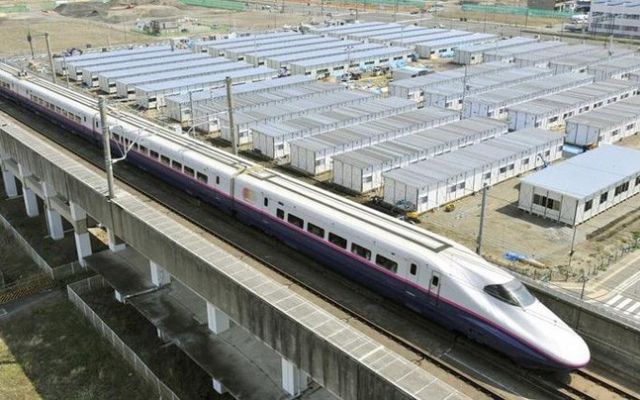
by admin | May 25, 2021 | Corporate, Corporate Governance, News, Politics
 By Anand K. Singh,
By Anand K. Singh,
New Delhi : Unfazed by opposition criticism, Indian Railways is working overtime to push ahead with the much-talked about the “Bullet Train” project, aiming to complete it ahead of the August 2022 deadline set by Prime Minister Narendra Modi.
Railway Board Chairman Ashwani Lohani, who has a reputation of a turnaround man, has taken up the task of monitoring and chairing the periodic review meetings of the project that is estimated to cost over Rs 1 lakh crore ($15 billion).
Lohani held a high-level meeting in Rail Bhavan last Thursday which was attended by Japanese Ambassador Kenji Hiramatsu, Niti Aayog Vice Chairman Rajiv Kumar, Central government officials, Principal Secretary-rank officials of Gujarat and Maharashtra, officials of NHSRCL (National High Speed Rail Corporation Limited), officials of Japan International Cooperation Agency (JICA) and the General Manager of Western Railway.
A senior railway board member, requesting anonymity, told IANS, “The railways is in no mood to delay the Mumbai-Ahmedabad Bullet Train project. Lohani will now hold a review meeting once every three months… And even on weekly basis, if required.”
Emphasising on the government’s intention, the official said, “The attendance of the Niti Aayog Vice Chairman, the Japanese Ambassador and the CRB in the review meeting is a clear signal that the government is taking the project seriously and there is no scope for any delay.”
“The CRB wants Indian Railway officials to take lessons from their Japanese counterparts about meeting deadlines,” he said.
The opposition has attacked the government for taking up a project at a huge cost instead of focusing on safety, a dire need of the time, and on schemes to improve passenger amenities.
The official said it was also decided at the meeting that “a road map for consultancy and civil engineering works will be prepared by January 2018”.
A ministry official associated with the Bullet Train project said a report on the signalling system and electrical reports would be ready by April 2018. According to him, the tracks and most of the signalling system would be brought from Japan.
The foundation stone for the Rs 1.08 lakh crore ($17 billion) 508-km Ahmedabad-Mumbai Bullet Train was laid in Ahmedabad by Modi and his Japanese counterpart Shinzo Abe on September 14.
Of the Rs 1.08 lakh crore, Japan is giving a loan of Rs 88,000 crore at a minimal interest of 0.1 per cent for 50 years. And the repayment will begin only after 15 years.
The railway official said that to encourage the Prime Minister’s ambitious ‘Make in India’ programme, “an appeal will be made to Indian and Japanese companies to make use the opportunity to work together”.
Meanwhile, the officials of the government of Maharashtra and Gujarat assured the railways of their help in land acquisition and smooth shifting of raw materials to construction venues.
A three-level monitoring committee was also constituted, including the Vice Chairman of Niti Ayog and Special Advisor to Japanese Prime Minister.
A working group led by Managing Director of NHSRCL Achal Khare and consisting of representatives of the ministries concerned, and the representative of JICA, has been formed. Besides the two committees, a technical expert committee led by the Managing Director of NHSRCL has also been formed.
Of the 508 km stretch, 92 per cent (468 km) of the route will be elevated, six per cent (27 km) will be in tunnels and the remaining two per cent (13 km) will be on the ground .
The high-speed train would also pass through the country’s longest tunnel of 21 km, of which seven km will be under the sea.
Twelve stations have been proposed that include Mumbai, Thane, Virar, Boisar, Vapi, Bilimora, Surat, Bharuch, Vadodara, Anand, Ahmedabad and Sabarmati.
The distance will be covered in two hours and seven minutes if the train stops at four stations — Ahmedabad, Vadodara, Surat and Mumbai. If the train stops at all 12 stations, it will cover the distance in two hours and fifty-eight minutes.
According to Railway Ministry officials, the operating speed of the bullet train would be 320 kmph and the maximum speed would be 350 kmph.
(Anand K. Singh can be contacted at anand.s@ians.in)
—IANS





